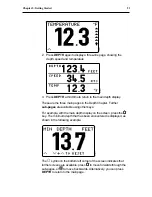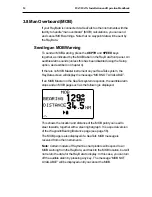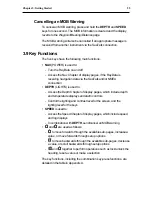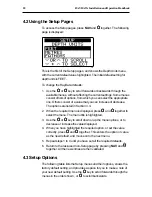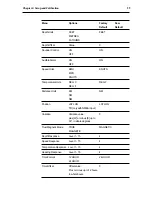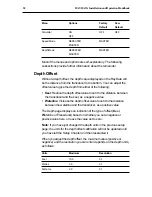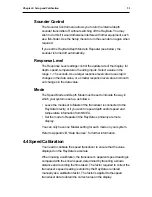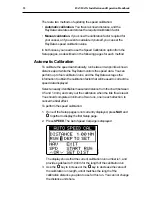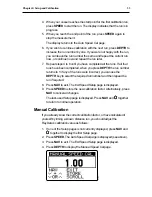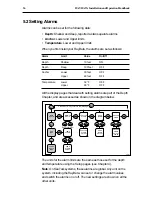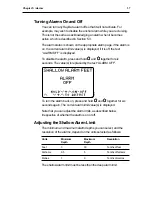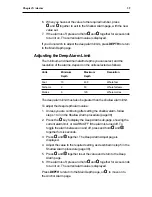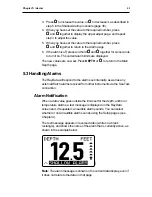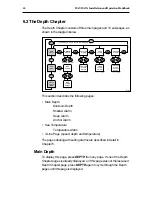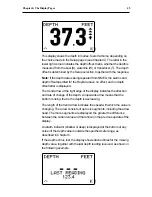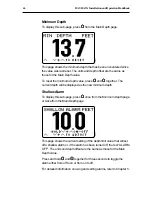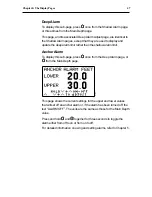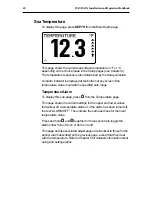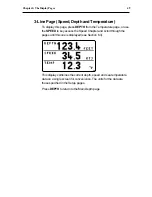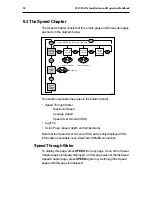
Chapter 5: Alarms
35
Chapter 5: Alarms
5.1 Introduction
This chapter explains how to set alarm limits and turn alarms on and off,
and how to handle alarms when they activate.
The alarm values that you set are limits. If the value received from a
sensor falls outside the range set by the upper and lower alarm values,
the result is an active alarm condition which is reported with a visual
message and, depending on your setup selection, an audible signal.
You can turn an alarm off so that it will not activate. In this case, the
alarm limit value is retained, and redisplayed when you turn the alarm
on again.
The RayData provides the following types of alarm:
• Shallow depth alarm, which is activated when the water is shallower
than the specified depth . Set this alarm to a value greater than the
depth at which you will ground, to allow yourself time to respond to
the alarm; allow a greater margin if you are in areas where the bottom
can shelve steeply.
• Deep depth alarm, which is activated when the water exceeds the
specified depth. This is useful when locating fishing grounds, or when
moving offshore away from coastal waters.
• Anchor alarm, which is activated when the depth becomes more
than or less than the values you have specified. In addition to its
usefulness in monitoring the depth of the anchored position, the
anchor alarm can also be used to help you maintain position on a
suitable depth-limited fishing ground, without having to reset the
normal shallow and deep alarm limits.
• Temperature alarm, which is activated when the surface sea
temperature becomes more than or less than the values you have
specified. This alarm is useful for locating warm currents or streams
for fishing, or to let you know when the water temperature is suitable
for swimming.
Note: When repeating depth and temperature information from NMEA,
the alarm settings have no effect.
Summary of Contents for Raydata
Page 3: ...61...
Page 25: ...16 RAYDATA Installation and Operation Handbook...
Page 35: ...26 RAYDATA Installation and Operation Handbook...
Page 75: ...66 RAYDATA Installation and Operation Handbook...
Page 81: ...72 RAYDATA Installation and Operation Handbook...
Page 83: ...74 RAYDATA Installation and Operation Handbook...

